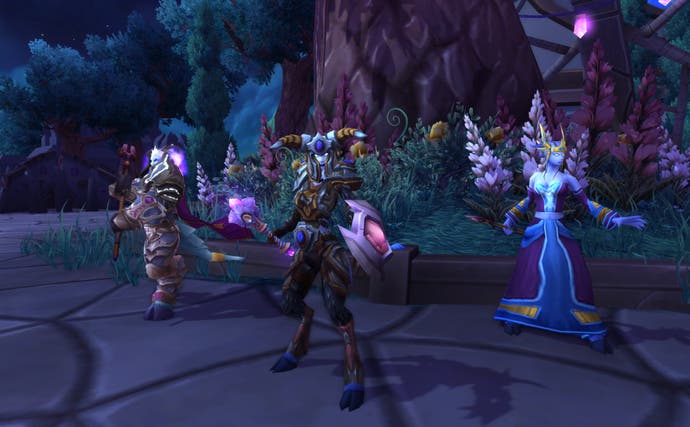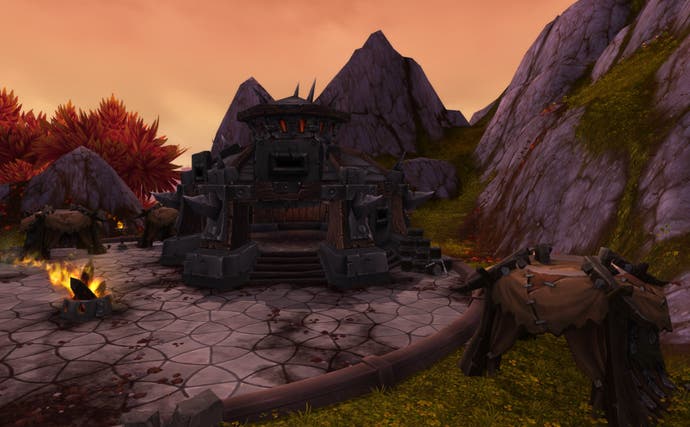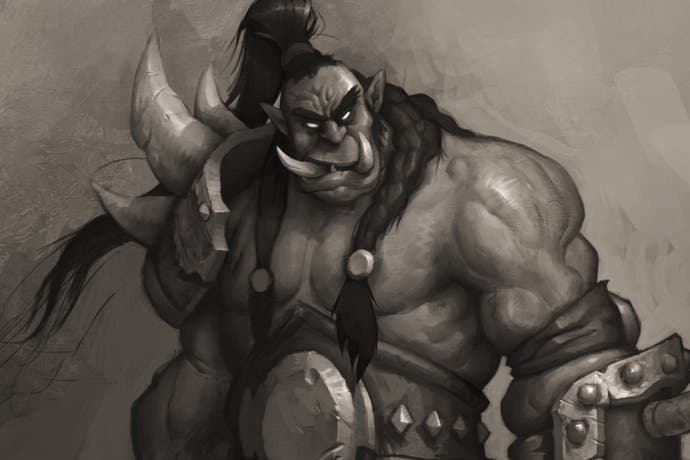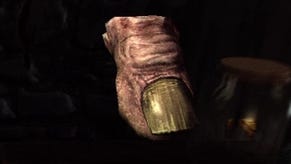How World of Warcraft plans to welcome you back
Streamlined yet familiar, Warlords of Draenor is built on a decade of experience.
"It's certainly possible to release content too quickly."
Ion Hazzikostas - he claims to have heard my brilliant "any old Ion?" joke before, alas - is the lead encounter designer on World of Warcraft. When discussing the forthcoming expansion Warlords of Draenor with me, he's just said something very odd. Read it again. He's just said that Blizzard is wary of releasing content "too quickly."
He's talking about raids, as it happens. More specifically, he's talking about the things about raids that the team has learned over the nine-and-a-bit years of WOW's existence. And it turns out he's probably correct in this instance. You probably can release new raids too quickly. "We want to pace out our content at an optimal rate for players to enjoy," he goes on to explain. As for this whole business of fretting about too much content arriving too regularly? "That's kind of a first-world problem we'll worry about when we get there," he admits. "Obviously, if you're releasing new raids on a monthly basis before anyone's finished the last one, that's not in anybody's interests."
This all came up because Hazzikostas has been explaining the degree to which Blizzard is approaching WOW's 10th anniversary by looking forwards. The plan from here on out (although, granted, this has been the plan before and has failed to materialise) is to release expansions - proper, multi-zone, story arc expansions - a lot more often, possibly at close to a rate of one every 12 months. He's excited because this kind of thinking allows the team to be more sophisticated in its scheming. One expansion can set up the merest hint of a new plotline, for example, while the next can bring that plotline centre-stage - and dangle threads for the one after that, too. The whole thing will start to feel ordered, even authored.
That's all great - and those who completed Mists of Pandaria will already have seen the genesis of Draenor's narrative, which sends Garrosh Hellscream travelling back in time to the titular orc homeland prior to its destruction, where he plans on raising an army. What's most interesting about Draenor, though, is the perspective it offers when you're looking the other way. WOW's fifth expansion may not come with a new class or race like all the others, but it's a clear product of 10 years' experience running an MMO all the same - even beyond its seven new zones and 17 new bosses. And it turns out that those 10years have certainly led to some interesting experiences indeed.

Take streamlining. MMOs have changed a lot in the last decade, and Hazzikostas argues that an early player who dropped out of WOW only to return to the game as it is today would be surprised by how much has been simplified over the years. From user interface issues to the way quests pay-out narrative, it's a far less cluttered experience than it was back in 2004.
Streamlining isn't a cure-all, though, and it does come with its problems. Sometimes, can you end up taking away friction that actually gives the game some of its character?
"Indeed," laughs Hazzikostas. "I think confusion and user-interface muddling is unambiguously the bad kind of friction, for example. I don't think there's much to be gained from intentionally obscuring elements in that way.
"That said, an example of friction that we're not only keeping but reinforcing with Draenor is this: over time, we had drifted towards allowing flying mounts in our outdoor worlds much more readily. Players are not going to be able to fly in Draenor. Even when they hit the new max level they will not be able to fly. We're going to unlock the ability to do so at a later point, but that actually makes the world a lot more engaging and lets us do a lot more in terms of gameplay. When we give you a quest to rescue a prisoner from an enemy camp? When you can fly, you can fly over all the tents and huts and you land on the prisoner. When you can't, suddenly you have a lot of interesting gameplay elements. You have to avoid patrols, you have to figure out the best route to get to the back of the camp, and there's gameplay there instead of nothing - even though it's less convenient."
This is a theme that comes up again and again when talking about the path to Draenor: the idea that change - even positive change - can come at a cost. It's particularly true as the years pile up and people get used to the way things already work.

"I think that the rich history of WOW, it does impart a certain conservatism in what we can do and how radical we can be with our changes," says Hazzikostas, smiling diplomatically. "We need to constantly balance what we see as maybe minor improvements against the inherent cost of change in terms of disruption and making this unfamiliar to the returning player."
Take disruption in class design, for example. "Very frequently we'll realise looking at a mage or a rogue or a warrior that there's something kind of clunky or awkward about their rotation and we want to adjust it somehow, maybe remove an ability, streamline it, or give them a new tool they didn't use to have that solves some problem we perceive," Hazzikostas says. "In the abstract, those changes may make the game a bit better. But the cumulative effect for the person who perhaps hasn't played in a few years or for a few expansions, then comes back and no longer recognises fundamental elements of the game - such as the class they played as? They end up feeling disconnected and disillusioned as a result. We need to pick and choose where we make changes, where we're going to expand, and where we need to preserve things for the sake of consistency."
Consistency is particularly important for Draenor, I suspect, because it seems so focused on the idea of the returning player. Its orcs-on-the-rampage storyline suggests a hearkening back to the familiar roots of the Warcraft RTS, and its time-travelling conceit lets Blizzard rework storied environments in a less permanent way than Cataclysm allowed for. You get both new and old in this package, while lore, for the most part, trumps fresh mechanics when it comes to the designers' focus.
Returning players won't just find the setting and themes more accommodating, either. Draenor promises to build on Pandaria's flexible raids mode, meaning that for all modes except mythic, parties of varying sizes can be formed, and the game will scale when players drop in and out rather than scrubbing the whole thing.
This is an idea the team's been heading towards for a while, and it's clearly inspired by the needs of an aging MMO audience with increased time pressure from jobs and children. "Absolutely," agrees Hazzikostas. "There is the idea of a more casual friends-and-family type of group that I think our raid game in particular has been under-serving for the last few years. There are people on the WOW team even who love raiding but don't have the time to commit like they used to. This allows them, both in terms of the level of difficulty, but also in terms of the fact they can now drop in and drop out as they wish. They don't have to worry that if there's an emergency, they're going to destroy the raid for the rest of the group when they leave."
And the concept of the group is becoming even more central to WOW as the years go by, I would guess. I ask Hazzikostas what he thinks the differences are between what drives the seven million and some players of a 10-year-old game and what drove those players back at the start. It's other players, he believes. "In some ways I think it's the rich relationships and the interconnections between them. I've been raiding with the same guild for nine years, and I have guild mates who were students when I first met them and who now have families and children. I've met them for drinks and we've hung out together, and they're people I'll still be talking to 10 years from now. As people drift in and out of the game, as their lives change and their interests change, they return to find there's stlll this tapestry of friends that they can pick up with."

Ultimately, it's not all about being with your pals, though. One of Draenor's few big mechanical additions is the inclusion of garrisons, after all - player housing, WOW-style, which means you build up a base rather than decking out a nice little cottage.
"For us, there were two main design problems about player housing we wanted to solve, as well as some technical limitations," says Hazzikostas. "The design hurdles were, first and foremost, trying to understand conceptually and thematically how player housing fit into our game. It's really hard to imagine a character in WOW, an orc warrior, deciding what drapes to hang in their home. Nothing about that said WOW to us. So what we realised is that this is base-building. It hearkens back to the real-time strategy roots and instead of decorating the living room you're placing large-scale buildings.
"The second design concern was with taking players out of the world," he continues. "The first question is: what do you do in your house? What's the point? You decorate it, but then are you meant to spend time there? If so, then you're not out in the world, you're not out in the field, you're not running into other players. So the garrisons are a place where we think of you as checking in fairly frequently, you'll build them up, go back to send followers out on a new mission and collect the spoils from the last mission. Maybe you put some of those resources into starting upgrades, and then you go back out into the world and adventure. There isn't going to be a bank or an auction house in your garrison that makes you want to spend all your time there."
The final hurdle that made garrisons possible, however, was technology - specifically phasing and instancing tech. "If we wanted to do this a few years ago we would have to have put it behind an instance portal and you'd have to go and zone in," says Hazzikostas. "It just wouldn't have felt quite as immersive as the way it works now. You're halfway across the zone, you look west to where your garrison is and you see the outline of the tower that is your mage tower on the horizon. You ride up to it and you seamlessly transition to being inside."
Finally, a piece of WOW to call your own. As ever, then, garrisons were probably worth the wait. Hazzikostas laughs to himself, presumably thinking back to his line about the perils of providing content too fast. "If we put player housing in as soon as we heard people wanted it," he says, "it would have been in the game six years ago."
This article was based on a press trip to Paris. Blizzard paid for travel and accommodation.









